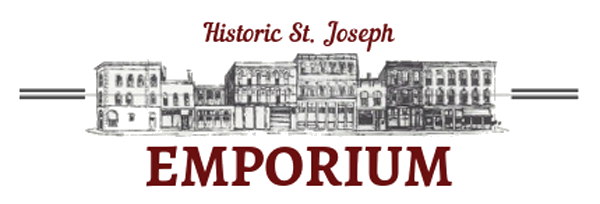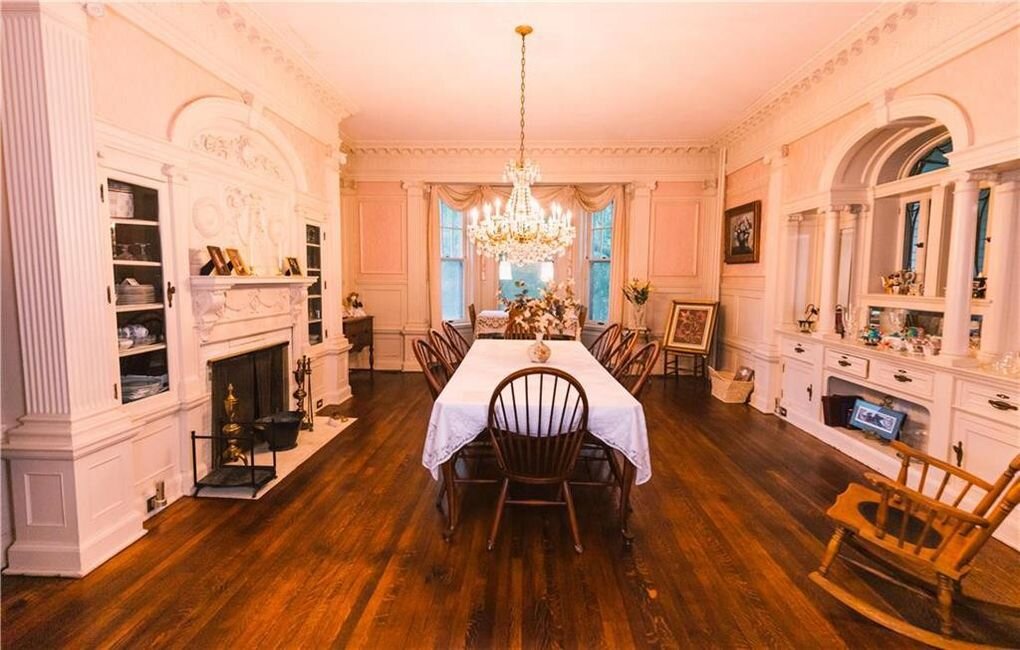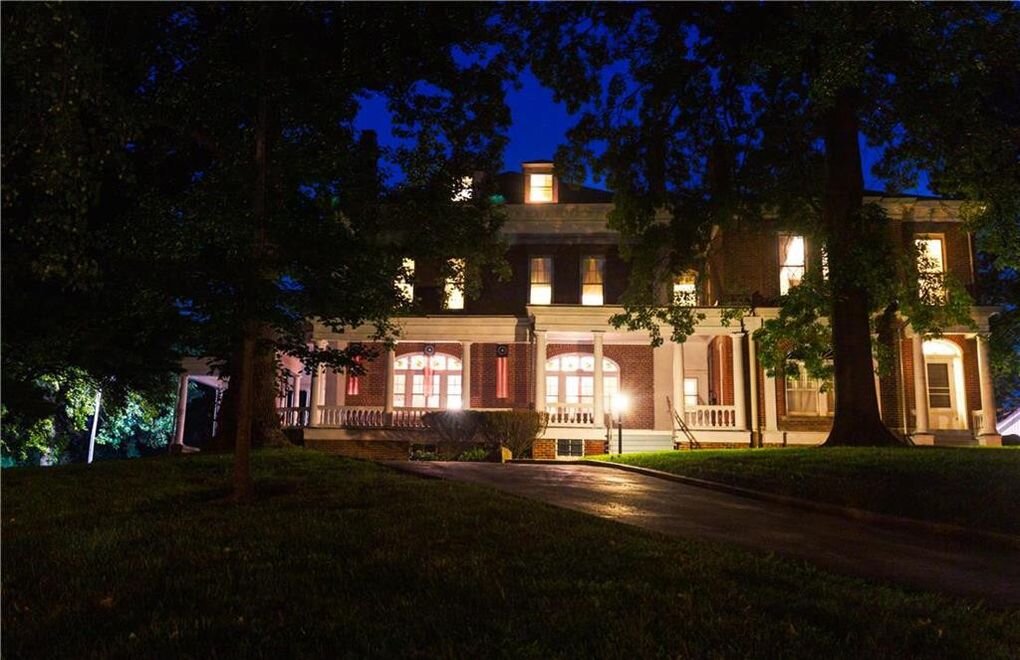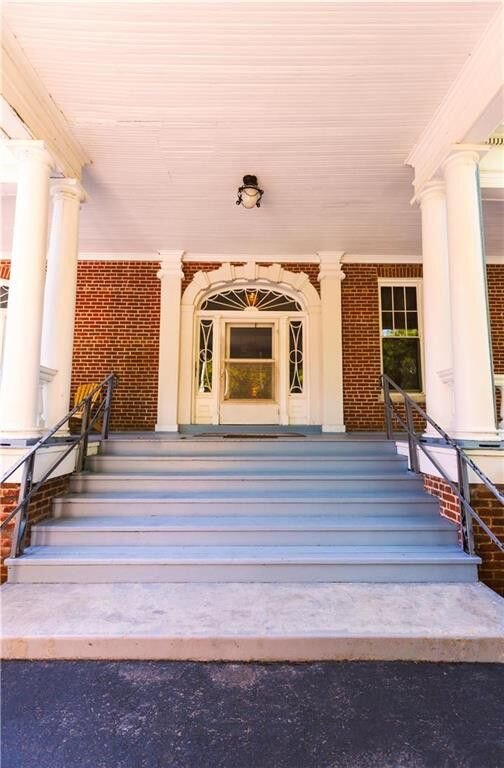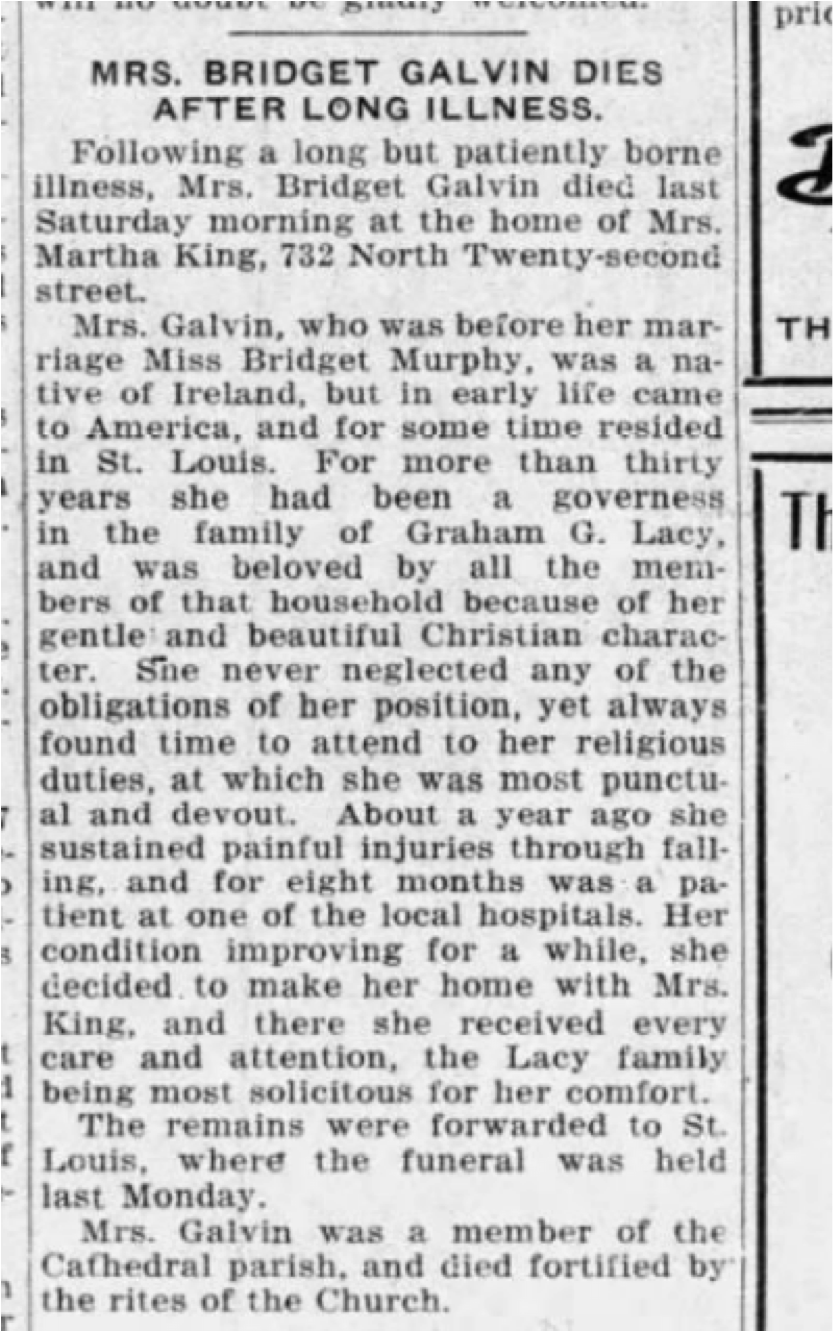Purchase Price $549,900
12 bed · 8 bath · 11,000 sqft
The Miller-Porter-Lacy House is an elegant 18 room residence located on Frederick Avenue in St. Joseph, MO. The main foyer is flanked by two libraries, one of which still bears the Lacy family crest on the casework and two fireplaces. The main floor also features a formal dining room with silk wallpaper, built-in buffet, and a chandelier from the original Robidoux Hotel.
Contact: Lonnie Bass – Berkshire Hathaway Home Services/Stein & Summers Real Estate
Call: 816-232-2000
House History & Gallery
The Miller-Porter-Lacy House at 2912 Frederick Avenue is a true piece of history. It began its existence in 1883/4 as a country house and grew into a country estate. Today, it still retains that country estate feel, sitting on 5 acres, and yet it is in the heart of St. Joseph close to shopping, restaurants, and entertainment.
In 1882 Charles and Ida Miller purchased the property from Dr. John Logan and built an L-shaped brick Italianate farmhouse on the land. Charles was listed as a capitalist in the 1884 City Directory and had made his fortune in the economic upswing that accompanied the end of the Civil War. Unfortunately, money cannot buy you immortality and he died of tuberculosis after having lived in the house only two or three years.
His widow Ida sold the house to Franklin and Bessie Porter. The Porters had only been married since 1880, but were certainly part of the social elite of the city. Franklin was a prominent attorney in town and was relatively wealthy. The idea of living on a country estate like this would have likely appealed to the Porters as they had both moved to St. Joseph from farther south (Franklin was born in North Carolina and Bessie in Kentucky) and this style of living would have reminded them of home. Living with them in 1900 were their 10-year-old son Lee and an African American servant Annabelle Kirkpatrick, who was also only 10.
The Porters decided that they needed a larger home and added a second L-shaped section to the original house creating a rectangular structure. It was during the Porter occupancy that this part of St. Joseph became more integrated in to the city proper. In 1896, Franklin Porter was embroiled in a conflict with a member of one of the wealthiest families in St. Joseph, Huston Wyeth who held the office of Road Overseeer. Wyeth wished to alter the driveways into the houses along the road (then known as Asylum Road) and the residents, most especially the Porters, went to court to stop him and succeeded in gaining a temporary restraining order until a compromise could be worked out.
In 1902 the Porters sold the house to Graham Lacy and his wife Ellen Tootle Lacey. Ellen was the daughter of Thomas E. Tootle, the brother and partner of Milton Tootle. He was a founding partner in the Tootle Lemon Bank.
When the Lacys acquired the house (the story is that Ellen’s father purchased it for them as a wedding present), their primary interest was in the site rather than the existing house. They engaged Edmond Eckel, the foremost architect in St. Joseph (to learn more see the article on Eckel in the “Know Joe” section of the Historic St. Joseph Emporium) to build them a house befitting their stature. While their grand home was being built, the Lacys moved in to the existing farmhouse. By the time Eckel had completed the new structure they had fallen in love with the original house and so plans were created to fuse the two into one. It is the eastern half of the house that was designed by Eckel.
Once the new house was built, the growing Lacy family made it a center of society in St. Joseph. It was the site of many parties and was considered one of the most elegant of the country residences associated with St. Joseph.
The Lacys had seven children (six daughters and one son) who all grew up in the house. Nearly all of the daughters married, some remained in St. Joseph others left to make their lives elsewhere. The exception was the youngest, Ellen Tootle Lacy who did go away to college, but returned home after two years. For much of her life she lived with her bachelor brother Graham G. Lacy Jr. who had followed in his family footsteps and gone into banking.
The family had a large compliment of servants, many of whom lived at the house with the family. Perhaps the servant with the longest tenure was Bridget Galvin, the family’s Irish-born governess. She remained with the family for 30 years until her health made it impossible for her to continue to work. The family continued to support her until her death in December 1919. At times the house must have seemed a bit like a United Nations, with residents from many different backgrounds. In 1910, seven servants were living in the house with the extended family (in addition to the Graham and Ellen and their children, her aunt Susan Bell was also living there). There was Bridget Galvin from Ireland; the housemaid Mary Granel who was born in Iowa to German parents; Iver Iverson the Danish chauffeur; Dora Gerber, the maid was born in Missouri; the gardener Henry Oliver was born in Maryland; James Lytel was the African American butler; John King was the cook, he was African American and born in Missouri; and the laundress Anne McGintey had been born in Ireland.
The Lacys remained in the house until their deaths; Graham died of cancer of the scalp and face at the house in 1952 and Ellen of heart disease shortly thereafter in 1953. They are both buried in the Tootle Mausoleum at Mt. Mora cemetery.
After a short period of vacancy, the property was sold to the Missouri State Chapter of P.E.O. in 1955 to be used as a retirement home. In 1976 the new owners made it a single family home again.
The Miller-Porter-Lacy House at 2912 Frederick stands as a reminder of the richness of life for some in St. Joseph. It still retains the aura of the genteel country estate.
Because of its status as a National Register listed home and its historic importance, the Miller-Porter-Lacy House is eligible for grants such as the Save Our Heritage grant administered by the City of St. Joseph.
